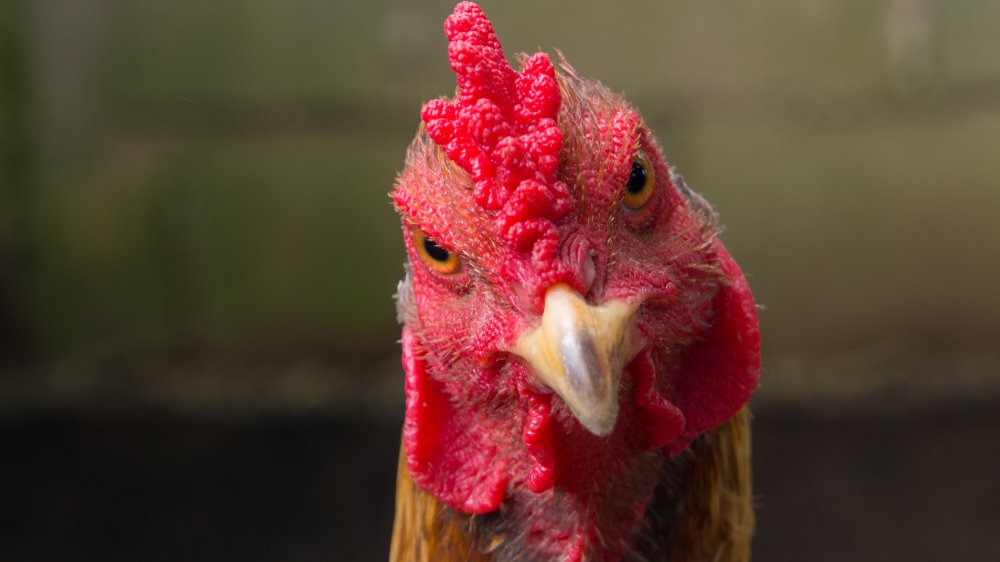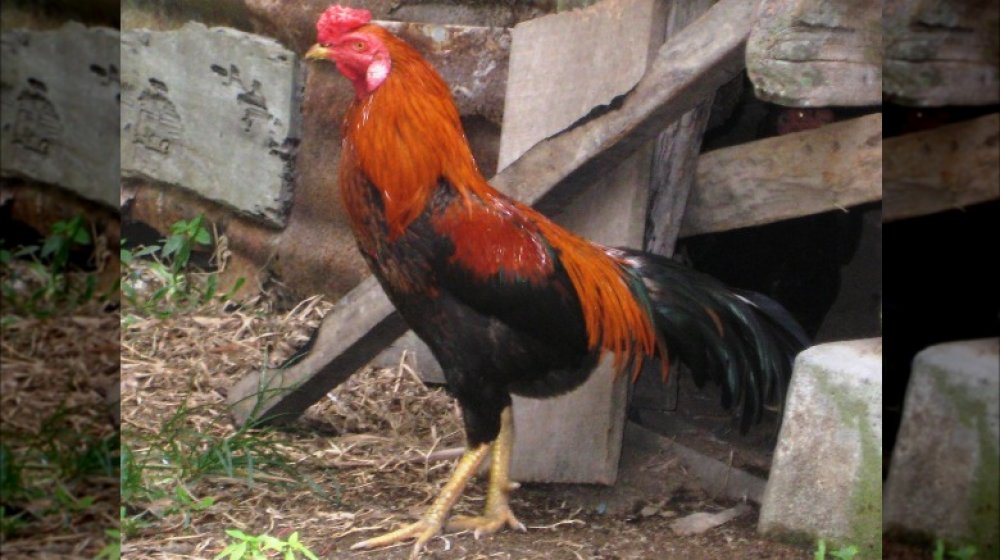The Most Aggressive Chicken Breed In The World
In July 2019, Newsweek reported that a "gang of 100 feral chickens" was sowing destruction and reaping mayhem on the island of Jersey. These real-life angry birds don't give a cluck, but they do give chase when they see a jogger. They block traffic, destroy gardens, and disturb sleeping residents in the middle of the night, which sounds like the perfect hour to restock the local KFC with fresh meat. After all, desperate times call for delicious measures, and even if you don't like fried chicken, Kentucky fried revenge is always scrumptious.
While you chew on that food for thought, ask yourself how such a problem arose in the first place. Newsweek says these feathered menaces are thought to be abandoned pets or livestock. So maybe the chickens need therapy to cope with their coop-less existence. But what if they're just naturally bad eggs? In 2018, the Miami Herald told the tale of Payo the rooster with blood-red eyes. Payo was slated to be slaughtered by a priest but a family intervened and adopted him. That's the opposite of abandonment, yet sadly, the Satan-eyed chicken repaid that kindness by raising hell in a Miami neighborhood. Payo "attacks dogs, cats and even people whom he considers threats to his territory."
It seems that some chickens — no matter how kind you are to them — just can't be saved from their own anger. So the best you can do is just save yourself from them. So what chicken breeds is most likely to reenact a Hitchcock film?
The Malay may want to melee
Michigan State University's College of Agriculture & Natural Resources has a list of different chicken breeds with descriptions of their general demeanor. Several don't play well with others, such as the Assel, whose name resembles the body part you might call it for being aggressive, and the Sumatra, which is described as "pugnacious" and "intolerant of confined spaces." But MSU names the Malay as being "among the most aggressive" mother-cluckers you'll come across. Malays are big chickens. Standing at about three feet tall, they may "appear bold and perhaps cruel due to their projecting eyebrows," writes Oklahoma State University. They're "rugged" and "rough around each other." This is one fowl that might just flip you the bird.

